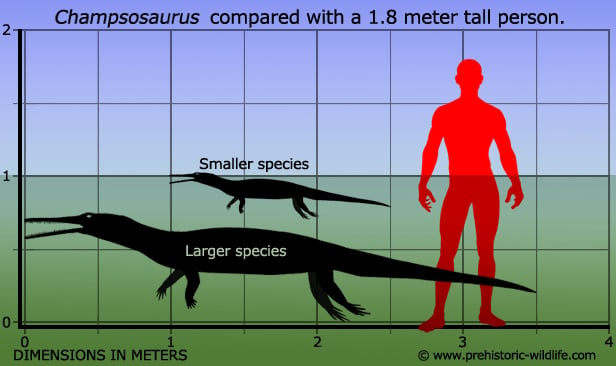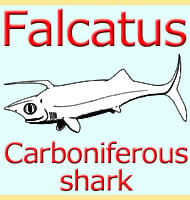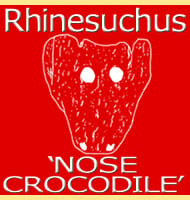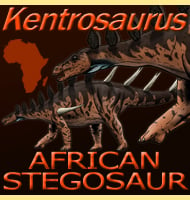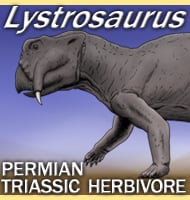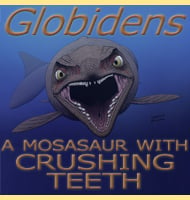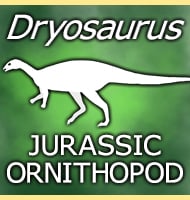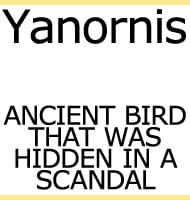In Depth
Although Champsosaurus looked like a crocodile and almost certainly lived like a crocodile, the genus was actually a member of the Choristodera. This is a separate group of diapsid reptiles which means that despite the physical similarity, Champsosaurus was not related to the modern crocodiles that we know today.
Out of all the modern types of crocodile, Champsosaurus is most similar to the gharial. The snout is long and thin which may indicate a specialisation for hunting smaller organisms such as fish. The rear proportion of the skull however is greatly expanded allowing the placement of very large jaw closing muscles. This may indicate that Champsosaurus had a surprisingly powerful bite given their narrow snouts. However an alternative explanation might be that the muscles were fast acting as opposed to powerful so that the jaws could close quickly around fast moving prey.
Champsosaurus has a long taxonomic history that dates back all the way to the ‘bone wars’, a rivalry between Othniel Charles Marsh and Edward Drinker Cope in North America during the late nineteenth century. At the time of writing there are currently seven recognised species of Champsosaurus, though in the past a great many more were once named. Almost one hundred and fifty years of study have seen some of these be identified as synonyms.
Many species of Champsosaurus were quite modest in size, though some, such as C. gigas could approach up three and a half meters in length.
Further Reading
- On some extinct reptiles and Batrachia from the Judith River and Fox Hills Beds of Montana - Proceedings of the Academy of Natural Sciences of Philadelphia 28:340-359 - Edward Drinker Cope - 1876. - The osteology of Champsosaurus Cope. - American Museum of Natural History, Memoirs 9:1-264 - B. Brown - 1905. - Champsosaurus albertensis, a new species of rhynchocephalian from the Edmonton Formation of Alberta. - University of Toronto Studies of Geological Survey 25:1-48 - W. A. Parks - 1927. - New species of Champsosaurus from the Belly River Formation of Alberta, Canada - Transactions of Royal Society of Canada 27:121-137 - W. A. Parks - 1933. - The lepidosaurian reptile Champsosaurus in North America. - The Science Museum of Minnesota, Monograph (Paleontology) 1:1-91 - B. R. Erickson - 1972. - Champsosaurus tenuis (Reptilia: Eosuchia). A new species from the Late Paleocene of North America. - Scientific Publications of the Science Museum of Minnesota New Series 5(1):1-14 - B. R. Erickson - 1981. - New choristoderes (Reptilia: Diapsida) from the Upper Cretaceous and Palaeocene, Alberta and Saskatchewan, Canada, a phylogenetic relationships of Choristodera - Zoological Journal of the Linnean Society 124:303-353 - K. -Q. Gao & R. C. Fox - 1998. - Champsosaurus (Diapsida: Choristodera) from the Paleocene of West Texas: paleoclimatic implications - Journal of Paleontology, v. 84, p. 341-345 - T. M. Lehman & K. Barnes - 2010. – Computed tomography analysis of the cranium of Champsosaurus lindoei and implications for the choristoderan neomorphic ossification. – Journal of Anatomy. 236 (4): 630–659. – Thomas W. Dudgeon, Hillary C. Maddin, David C. Evans & Jordan C. Mallon – 2020. – The internal cranial anatomy of Champsosaurus (Choristodera: Champsosauridae): Implications for neurosensory function. – Scientific Reports. 10 (1): 7122 – Thomas W. Dudgeon, Hillary C. Maddin, David C. Evans & Jordan C. Mallon – 2020. – Feeding behaviour and functional morphology of the neck in the long-snouted aquatic fossil reptile Champsosaurus (Reptilia: Diapsida) in comparison with the modern crocodilian Gavialis gangeticus. – Journal of Anatomy. 240 (5): 893–913. – Ryoko Matsumoto, Shin-ichi Fujiwara & Susan E. Evans – 2021.
